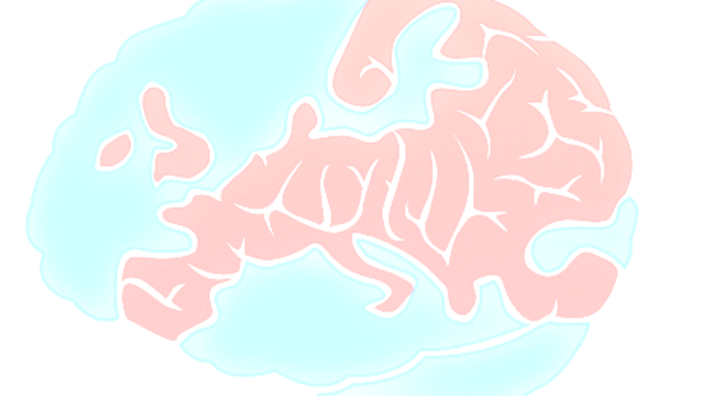
by Filip Balunovic. Originally published on 2013/11/21
After the fall of former Serbian leader and the president of Federal Republic of Yugoslavia at the time, Slobodan Milosevic in the year of 2000, the most significant members of the new Serbian leadership were the new president of the FR Yugoslavia Vojislav Kostunica and the new Serbian prime minister, Zoran Djindjic. When he was asked in an interview for a German magazine in August 1999, about the desirable strategy of the West towards the Balkans, Mr. Djindjic replied: ‘What should be done now is to dry out the ‘bar of destruction’. Joschka Fisher (at the time Vice-chancellor of Germany) has already given the first propositions which go into that direction. Some kind of Marshall Plan for the Balkans.’ The second participant in this interview, Slovenian philosopher Slavoj Zizek replied: ‘That is so naive. I’m afraid that the Marshall plan would turn the Balkans into a temporary protectorate and that it will exploit the region economically.
On the one hand Mr. Djindjic envisioned a European Serbia. As he put it, ‘The West has to accept that the Balkans is a part of Europe. Without the Balkans, Europe is not complete and without Europe, the Balkans is a ticking time bomb which explodes every five years’. Thus, he was strongly dedicated to the project of ‘Serbia in Europe’. His assumption was of course that Serbia should return to Europe, after a decade of destruction and wars. Or might he be referring to a much longer period of Serbia being out of Europe? According to his most famous book “Yugoslavia as an Unfinished state” Djindjic found that Yugoslavia itself was not a part of modern Europe – at least not in terms of the western legal definition of a modern state. According to Djindjic, even the Socialist Federal Republic of Yugoslavia was a state without statehood. Nevertheless, what concerns us here, is rather his suggestion of imposing some kind of Marshall Plan upon the Balkans and by default, on Serbia. As we already know, the Marshall Plan was created after the Second World War, with an aim to help Europe economically – which is why its other name was ‘The European Recovery Programme’. The purpose of the plan was to create economic cooperation among the states of Europe and to stimulate economic growth on the continent. Up to this point, there is nothing controversial about it. Still, the Plan carried the idea that creating hope and relieving misery would diminish the appeal of Marxist arguments and the appeal of communism among Europeans that also existed. It is precisely this, not explicitly stated part of the plan (it was more concretely presented in the Truman doctrine) that puts into question the real aim of the Marshall Plan. Was it an altruistic move on the part of the US, or was it just a perfect means for spreading the ‘American way of life’ and hegemonic role of the US around Europe in order to prevent any further spreading of the communist ideology to Western Europe and so, any kind of possible resistance to the domination of the SU? Perhaps the truth lies in the middle, but what may be asked in addition is, which motive prevailed, the altruistic or the hegemonic motive? The answer to this question might be crucial if we want to interpret what Mr. Djindjic meant by mentioning the ‘Marshall Plan’ for the Balkans.
If we take the Marshall Plan as a reference for our analysis and put the Balkans in place of Europe, and Europe in place of the US, the logic would be the following. Djindjic obviously imagined him in the role of Konrad Adenauer. Joschka Fisher, who according to Djindjic had already in 1999 envisioned a ‘Marshall Plan’ for the Balkans – may be compared with George Marshall. Let’s first look at the similarities.
In the original situation, the US was involved in the war (WWII), though, the extent to which the US as a state was damaged was minor in comparison with Europe. Fifty years later, the damage from the Yugoslav wars had been contained within Yugoslavia and had not spread to Western Europe. So, we can say that in both cases, the less damaged regions tried to invest their money into the economic rebuilding and recovery of the wounded regions. As in the former case, the main political forces were in favour of this aid in the case of Serbia. Both Adenauer and Djindjic were somewhat cosmopolitan, but nevertheless nationalists as well (Adenauer was a CDU member, while Djindjic had on numerous occasions called for the unification of the Serbian land – Serbia, Montenegro, Republika Srpska 1). In spite of the opposition coming from the Soviet Union and European communists in the former, and Serbian far right nationalists in the latter case (due to the absence of the real left), in both cases these plans had been implemented. Foreign capital entered into the damaged regions. Here we come to the crucial difference in terms of the outcomes. Namely, the level of the development of the regions that needed help was not the same. In the first case, we had highly industrialized Western Europe, which had already been an integral part of the world’s flow of capital and commerce. Two wars in the first part of the 20th century destroyed much of what had been achieved until then, but at the same time, rapid recovery after the two wars proved that their power and influence in the modern world system still remained very strong 2. In other words, Western Europe at the time could have afforded to itself even the second scenario (that the Marshall Plan had pure ideological or even imperial aims), because the price they would have to pay would not have been that high. This means that the economy of these countries would recover with the help of foreign capital, but the mechanisms for developing the economy independently would still remain and it would only be a matter of time when this process would cease to be considered as exploitation, but rather as a game with the ‘win – win’ outcome. Therefore, Adenauer did not have any doubts on whether to accept the foreign aid or not – whatever the real intention of the US was. The same was valid for other developed countries of the European core at the time.
On the other hand, the situation with the Marshall Plan for the Balkans, or more specifically, Serbia – was different. Unlike Western Europe, Serbia was not as developed before the war. If we go back for a few centuries, we see that Serbia has always been the European periphery.3 Therefore, despite the progressiveness of the Yugoslav era, Serbia was, after the wars, economically almost completely destroyed, as was Europe after the Second World War. However, the crucial difference is that Serbia in 2000 was not even close to being in a position to accept foreign aid unconditionally, as if it would be able at some point to start its development independently, while at the same time escaping from the political influence of its financial backers. Therefore, Serbia was not in a position to be careless about the real interests of the ‘Marshall Plan’ for the Balkans. If it happened that the interests are rather neo-imperialistic than altruistic, Serbia would never be able to manage a ‘win – win’ outcome. On the contrary, it would pay the highest possible price for the decision to imitate Germany after WWII. This would mean not just temporarily accepting foreign rule, but also legitimizing the unequal relation between the subordinated and the dominant.4 This would again mean that, considering the present condition, Slavoj Zizek was also wrong when he responded to Djindjic that ‘the Marshall Plan would turn the Balkans into a temporary protectorate and exploit it economically’. The mistake is located in the word ‘temporary’, due to a simple reason. Even if the dominant side relinquishes its dominant position, the subordinated side will not be able to flourish on its own, but will rather have to continue seeking subordination in order to survive. Perhaps the best explanation for the outcome of the implementation of an unofficial ‘Marshal plan’ in Serbia after 2000 was given by the current Serbian prime minister in an interview for the UK’s ‘The Telegraph’, when he said that ‘Serbia has become a pariah nation, untouchable like a leper’.
If this is so, one could think there is no other solution but to recall the ideas of the famous doctor, who specialized himself in curing leprosy.5
1 Djindjic, Zoran, Interview for ‘Radio Devic’, 27.9.1995 in a small place called Smederevska Palanka : ‘Serbian national question should be resolved by the creation of the Union of Serbian States (serb. Savez Srpskih drzava)
2 Immanual Wallerstein developed a theory in order to explain historical changes involved in the rise of the modern world. The modern world system, essentially capitalist in nature, followed the crisis of the feudal system and explains the rise of Western Europe to world supremacy between 1450 and 1670; see: Wallerstein, Immanual, The Modern World System: Capitalist Agriculture and the Origins of the European World Economy in the Sixteenth Century ; Academic Press, 1974
3 For instance, in 1834, the procent of rural inhabitants in Serbia was 93.15 %, and in 1874 – 89.74 %
4 The new ruling class did not form the conditions for the establishment of capitalist policies and structures on the basis of the assumptions found within the existing state order, but these assumptions were imposed upon them from the outside
5 As a young student of medicine, one of the most famous revolutionaries in the world Ernesto Che Gevara traveled throughout the South America in order to deal with leprosy in the impoverished parts of the continent.

 The European Union in Space: From exploration and innovation to security and autonomy
The European Union in Space: From exploration and innovation to security and autonomy  The Rise of the Right: The Threat Right-Wing Extremism Poses to Women and Feminist Efforts in Germany
The Rise of the Right: The Threat Right-Wing Extremism Poses to Women and Feminist Efforts in Germany  The silent shield – how special operations safeguard the global supply chain
The silent shield – how special operations safeguard the global supply chain  The Human Factor: How Personality and Psychology Drive Crises
The Human Factor: How Personality and Psychology Drive Crises 


